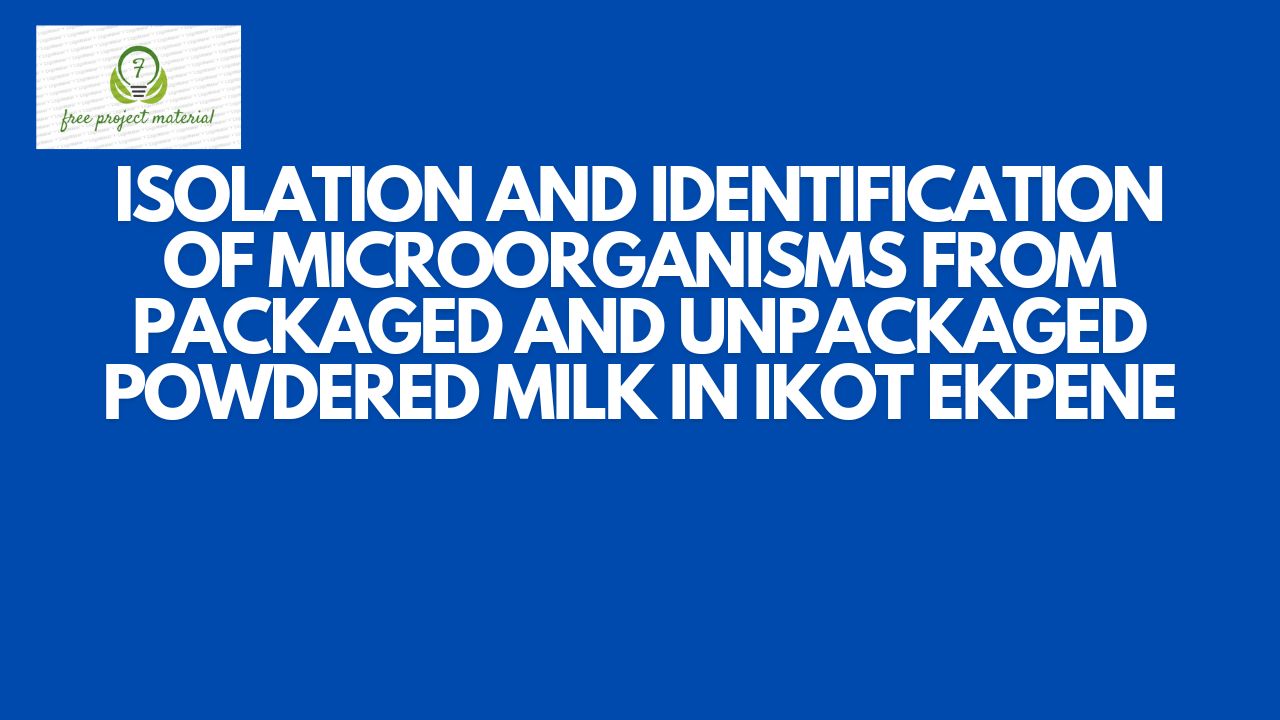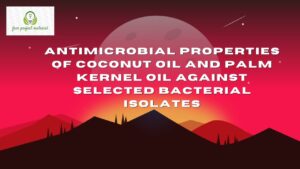TABLE OF CONTENT
Cover page – – – – – – – – –
Title page – – – – – – – – –
Certification – – – – – – – –
Dedication – – – – – – – –
Acknowledgement – – – – – – –
Tables – – – – – – – – –
Abstract – – – – – – – –
CHAPTER ONE
1.0 Introduction – – – – – – –
1.1 Background of the Study – – – – – –
1.2 Aim – – – – – – – – –
1.3 Objective – – – – – – – –
1.4 Scope and Limitation of the Study – – – –
CHAPTER TWO
2.0 Literature review – – – – – –
2.1 Milk – – – – – – – – –
2.2 Milk Spoilage – – — – – – –
2.2.1 Spoilage Microorganisms in Milk – – – –
2.3 Milk and Fungi Spoilage – – – – – –
2.4 Pathogens Found in Milk – – – – – –
2.5 Types of Microorganisms – – – – – –
2.5.1 Types of Microorganisms and their activities in Milk –
2.5.2 Microorganisms grouped according to their impact on Milk Quality
2.6 Sources of Milk Contamination – – – – –
2.6.1 The Key Sources of Contamination – – – –
CHAPTER THREE
3.0 Materials and Method – – – – – – –
3.1 Materials – – – – – – – – –
3.2 Samples Collection – – – – – – – –
3.3 Sterilization of Materials and Media Used – – – –
3.4 Serial Dilution of Samples – – – – – –
3.5 Enumeration of Microorganisms – – – – –
3.6 Purification of Bacterial Colonies – – – – –
3.7 Purification of Bacterial Colonies – – – – –
3.8 Microscopy – – – – – – – – –
CHAPTER FOUR
4.0 Results and Discussion – – – – – – –
4.1Results – – – – – – – – – –
4.2 Discussion- – – – – – – – –
CHAPTER FIVE
5.0 Conclusion and Recommendation – – – – –
5.1 Conclusion – – – – – – – –
5.2 Recommendation – – – – – – –
References
CHAPTER ONE
1.0 Introduction
1.1 Background of the Study
Cow’s milk has long been considered a highly nutritious and valuable human food, and is consumed by millions daily in a variety of different products. Its nutrient composition makes it an ideal medium for bacterial growth, and therefore it can be considered one of the most perishable agricultural products because it can so very easily be contaminated. Many contaminating organisms only spoil the product, thereby reducing its shelf-life. Some, such as lactic acid bacteria, are useful in milk processing, causing milk to sour naturally (Abarca et al., 2000). Unlike meat and meat products, milk is less likely to be subjected to any subsequent heating by the consumer before consumption and contaminated milk is therefore potentially more dangerous. The high fat content of milk protects pathogens against gastric acid, while its fluid nature ensures a fairly short retention time in the stomach.(Chaveroce et al., 2001).
Raw milk of good hygienic quality is necessary to produce milk products of good quality and adequate shelf-life and to provide a safe, sound and wholesome food for the consumer. Since milk is a liquid, it is in contact with some type of equipment or surface from the time it is removed from the cow until it is consumed. Milk freshly drawn from a disease-free udder contains small numbers of bacteria which derive from organisms colonizing the teat canal. Milk quality starts to deteriorate immediately after milking due to bacteria entering the milk from a wide variety of sources. These bacteria may originate from soil, water and faeces that collect on the skin of the cow and unavoidably end up in the milk. Once micro-organisms get into the milk they multiply rapidly. (Espin et al.,2002). The speed at which milk quality declines depends on the hygiene of the milk, milking equipment and bulk tank, as well as the temperature and length of time that milk is stored before sale to the consumer or treatment at a factory. Microbial growth can be controlled by cooling the milk, as most micro-organisms reproduce more slowly in colder environments. (Gelderblom et al., 2013).
Pathogenic bacteria may also be present in raw milk as a direct consequence of clinical or subclinical mastitis. (Giesecke et al., 1989) reported that subclinical mastitis was prevalent in at least 75.5% of South African dairy herds which were affected at levels ranging from moderate to very serious. Mastitis affects a variety of compositional parameters of milk which in turn may affect the dairy technological usefulness, the nutritional and hygienic characteristics of milk. Among the organisms commonly producing mastitis, Streptococcus agalactiae, Staphylococcus aureus (S. aureus) and Escherichia coli (E. coli) are pathogenic for man. (Hallsworth & Willians 2009)
1.2 Aim
This research is aimed at isolating and identifying microorganism in packaged and unpackaged milk.
1.3 Objectives
- To isolate microorganism associated with packaged and unpackaged powdered milk.
- To determine total microbial count of packaged and unpackaged powdered milk.
- To make recommendation based on the result of this work.
1.4 Scope and limitation of the Study
This Research work is limited to the Isolation and Identification of microorganisms from packaged and unpackaged milk powder in Ikot Ekpene, due to lack of adequate materials time and financial constraint.


